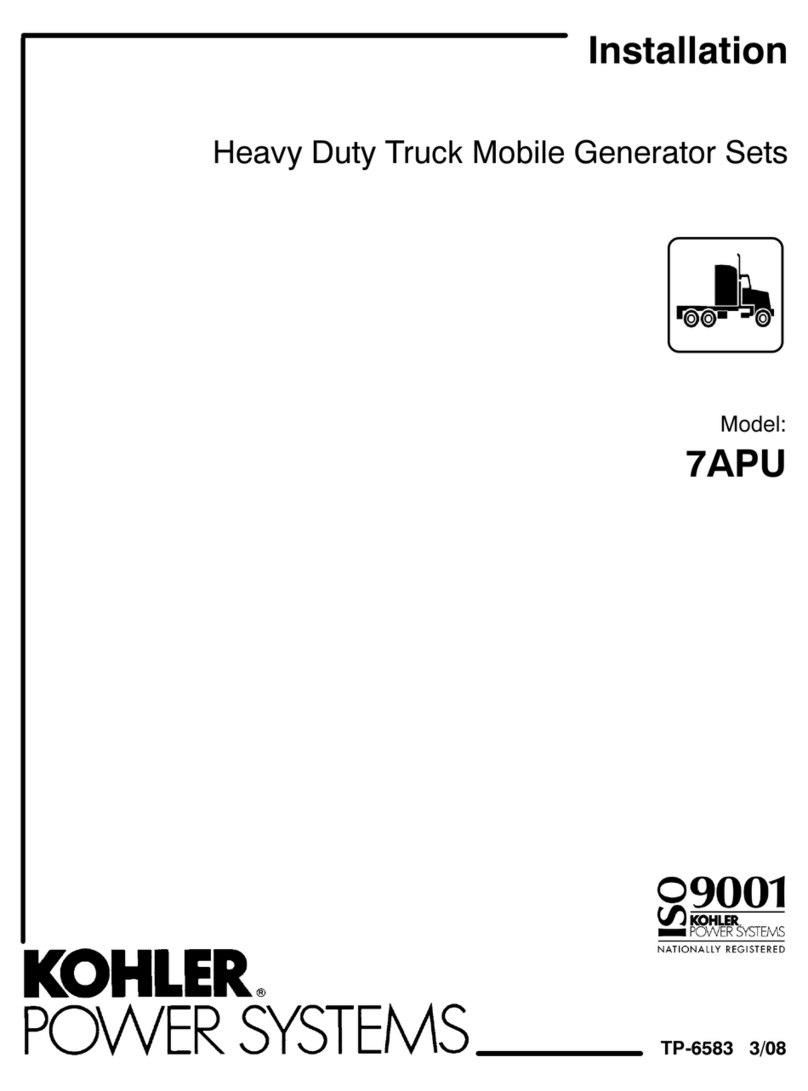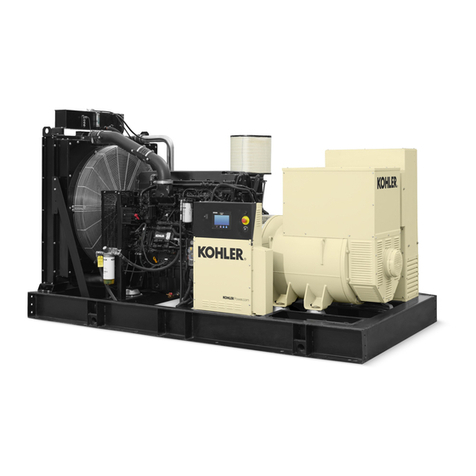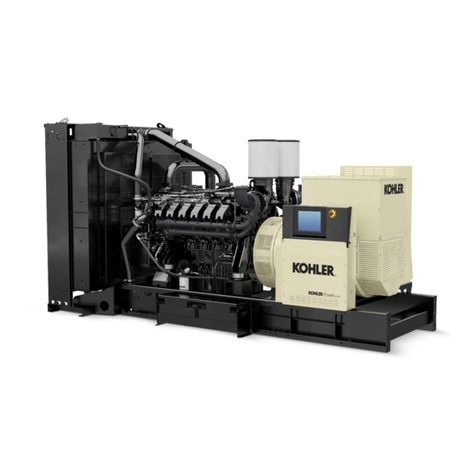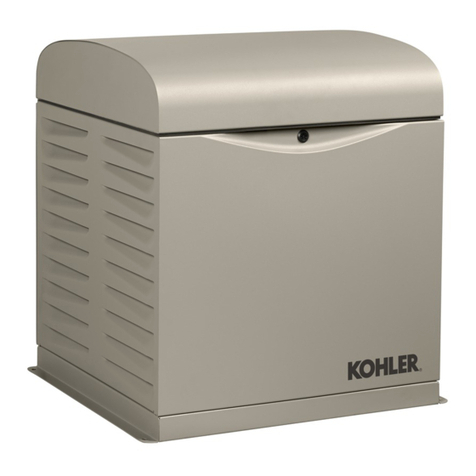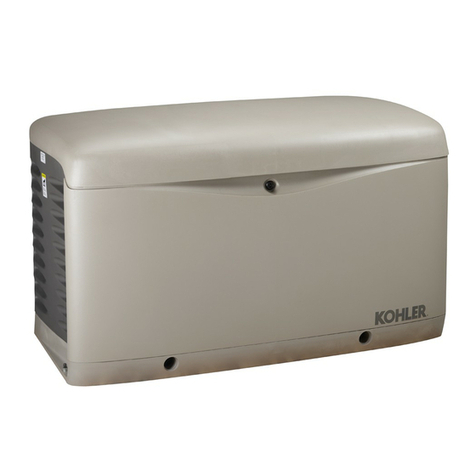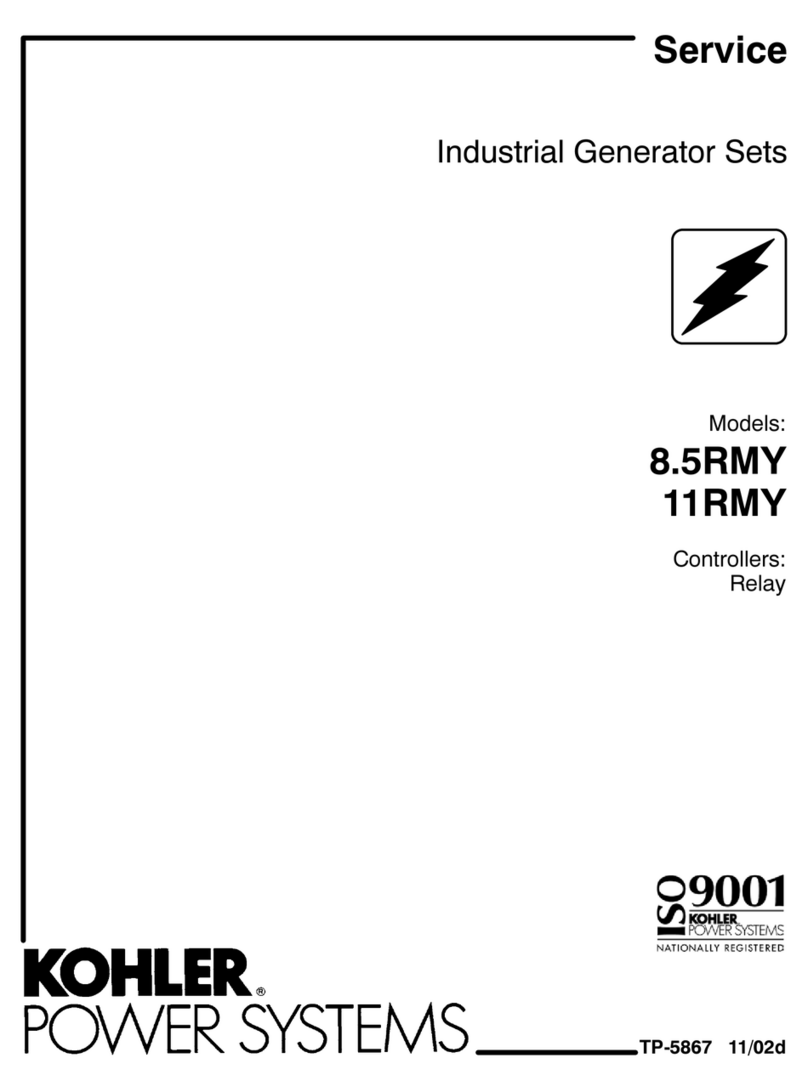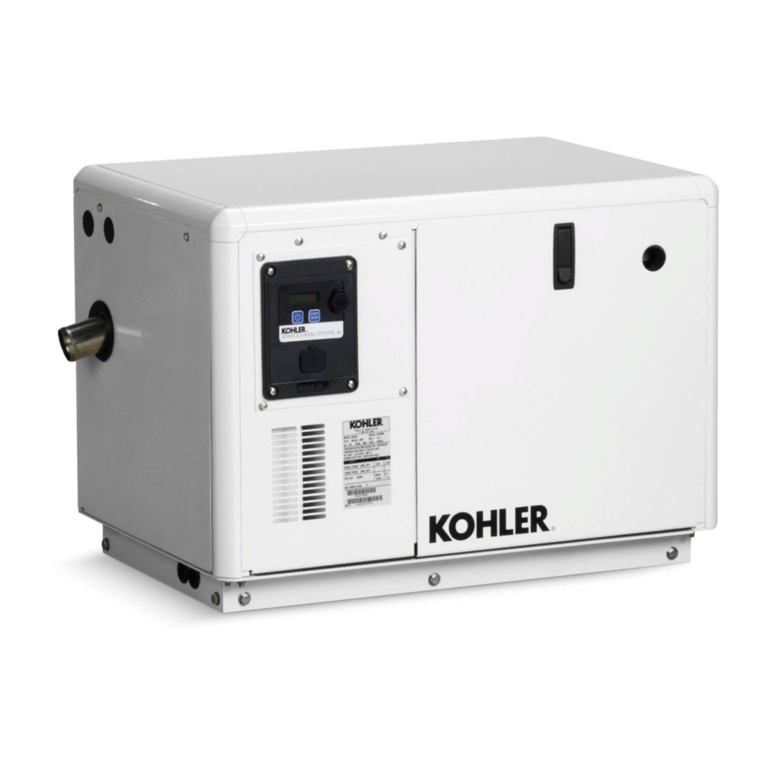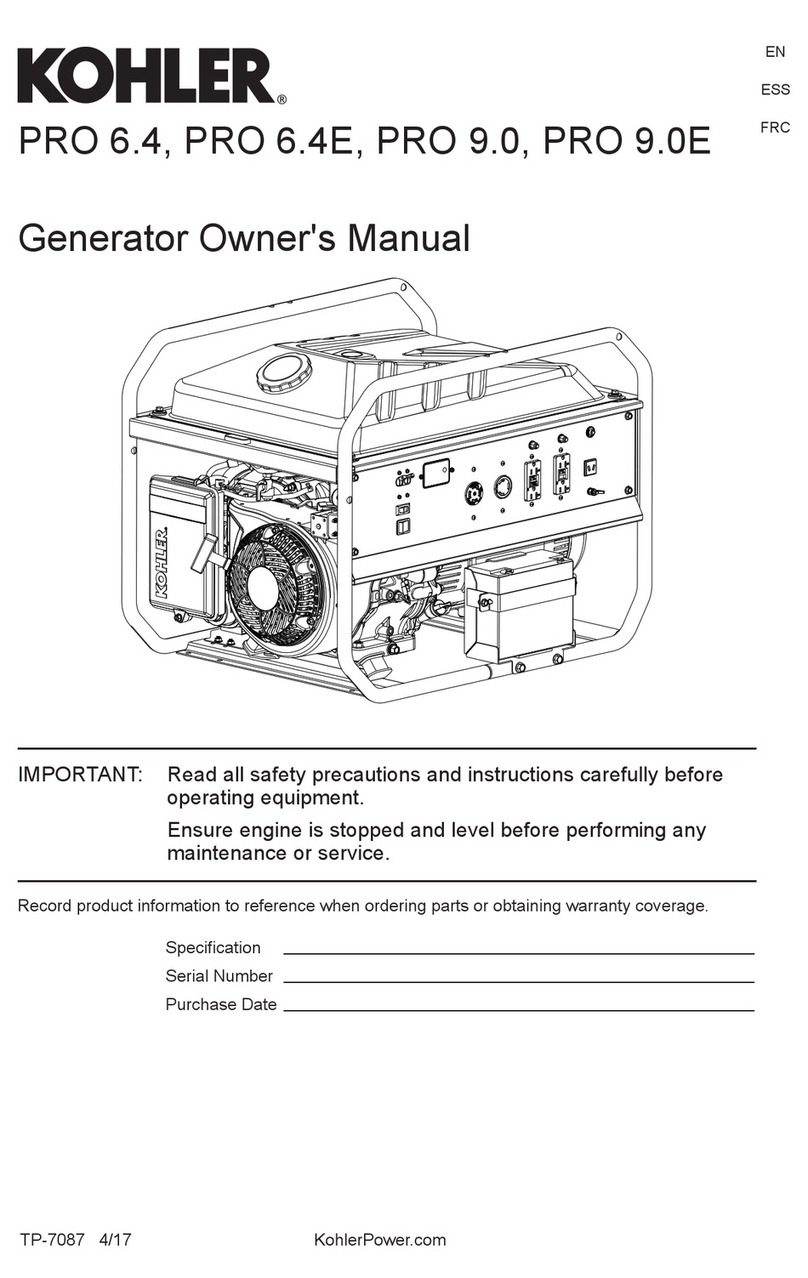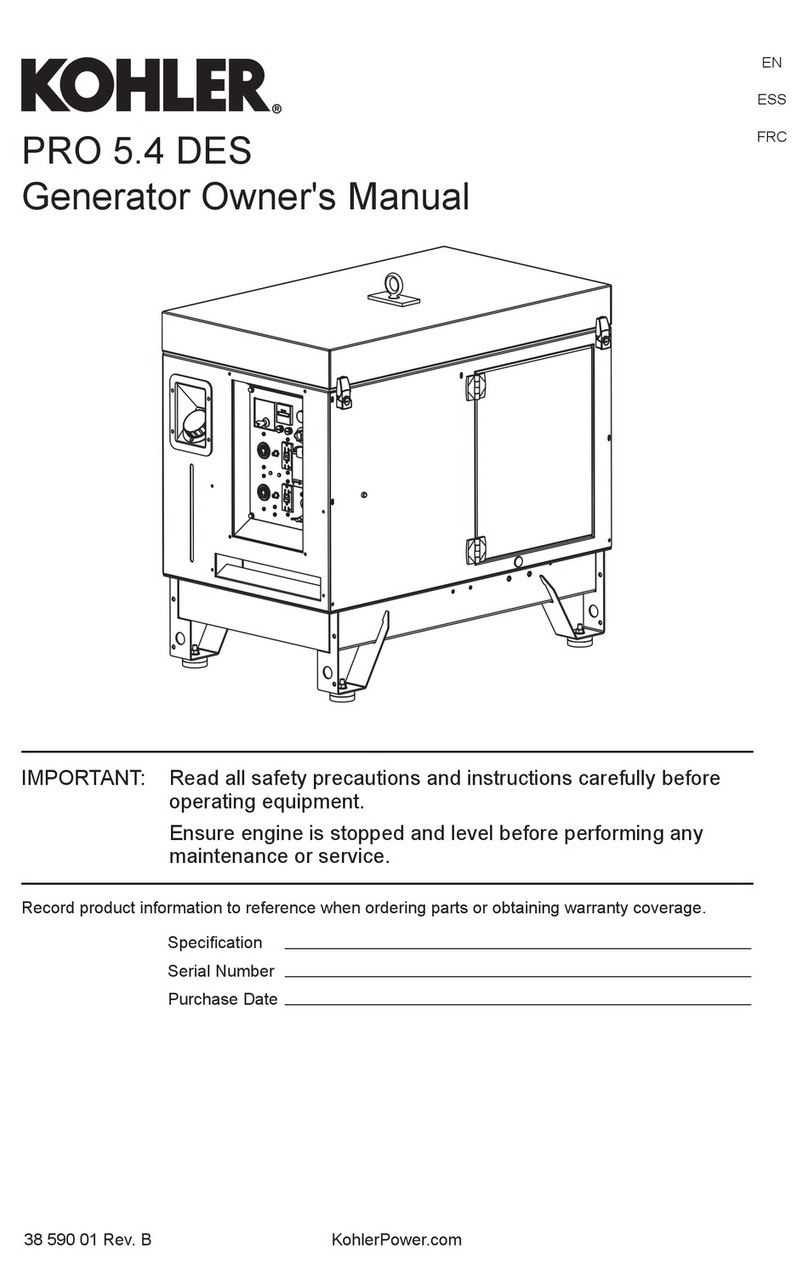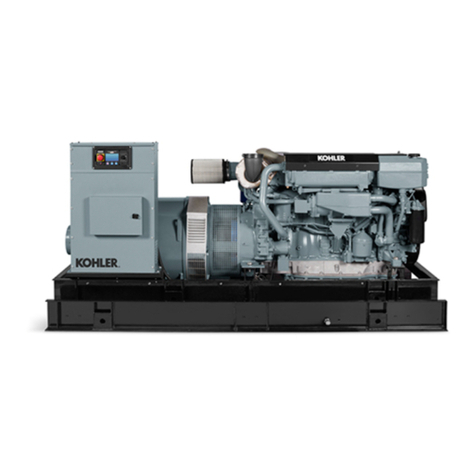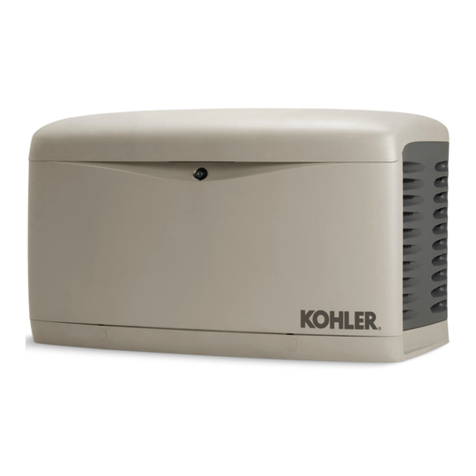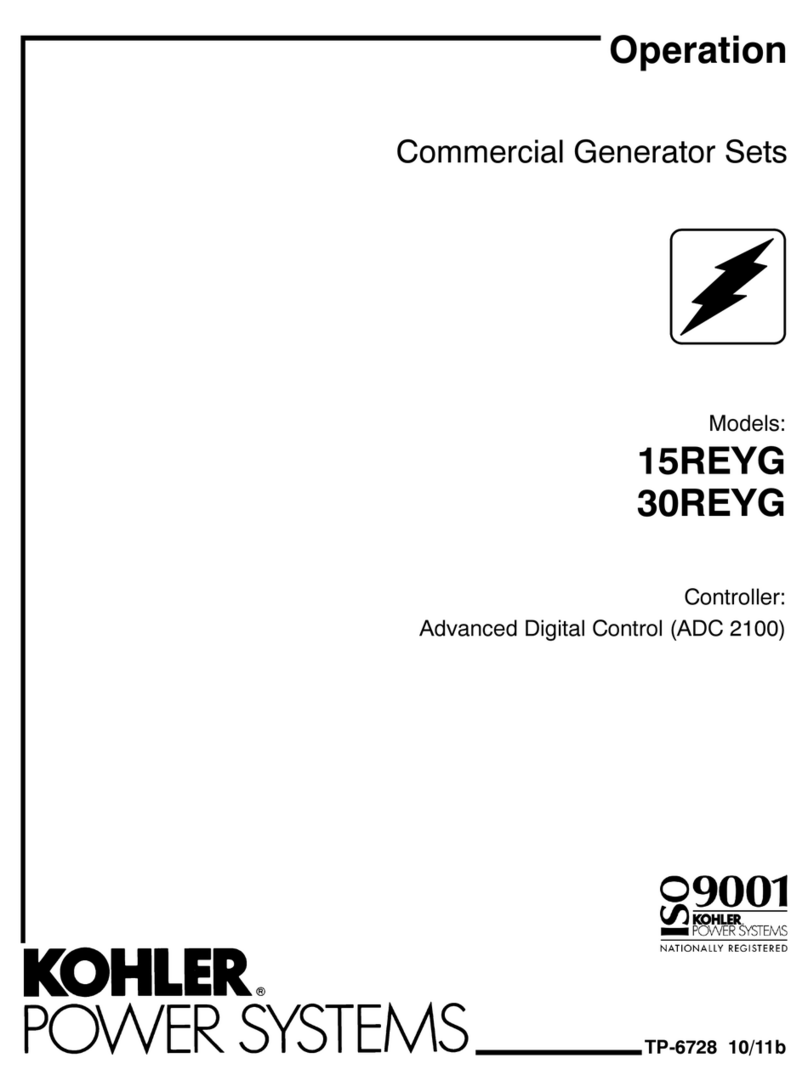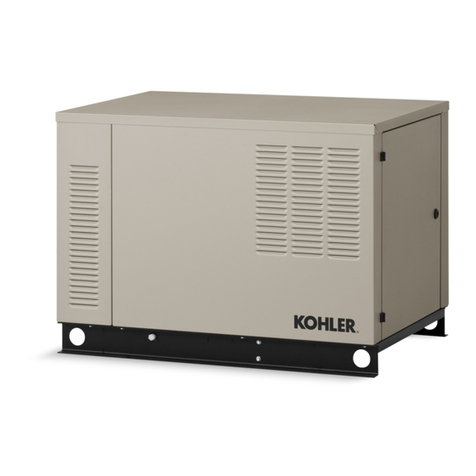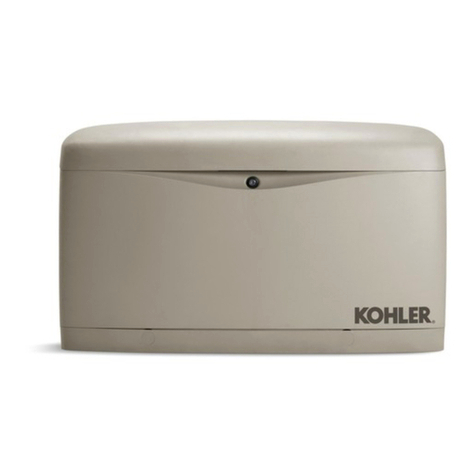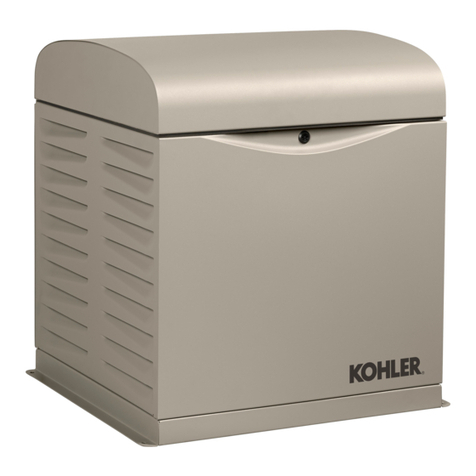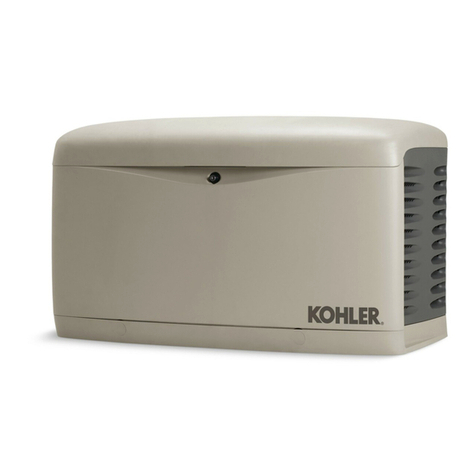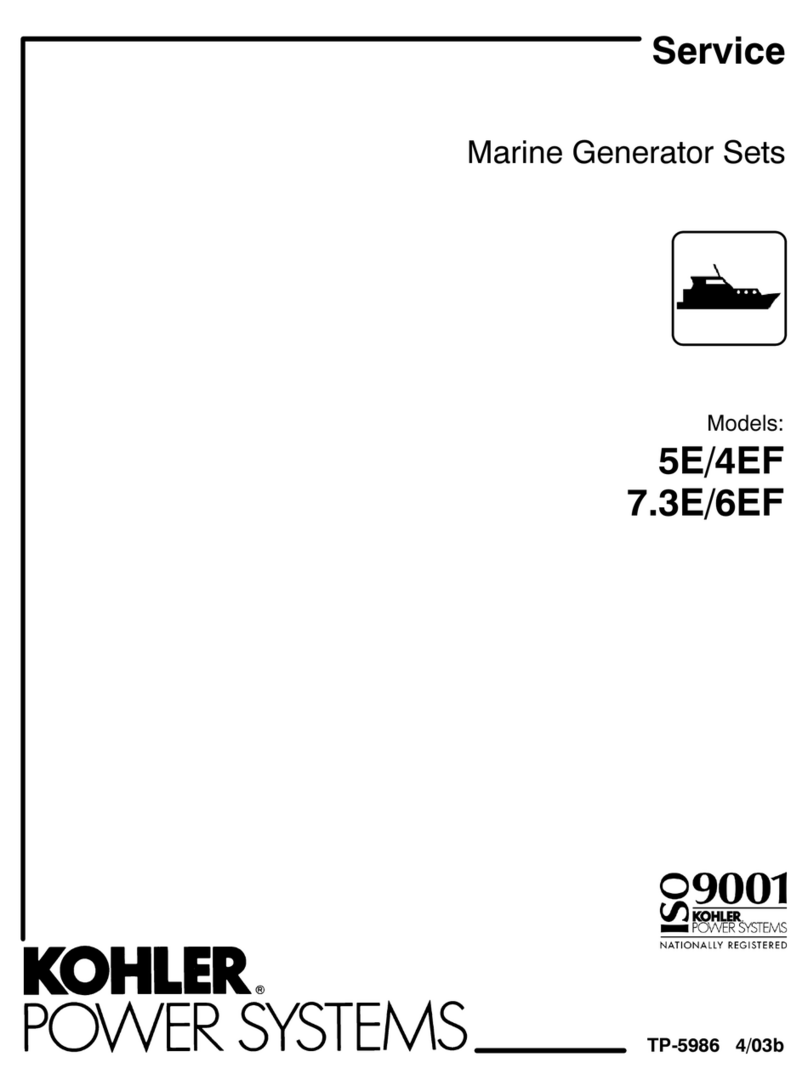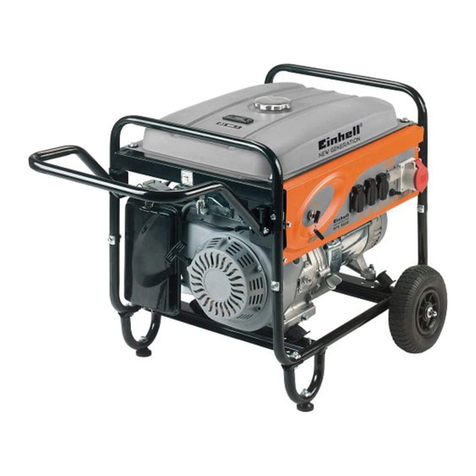
TP-6967 2/216 Sa ety Precautions and Instructions
Battery gases. Explosion can cause
severe injury or death. Battery gases
can cause an explosion. Do not smoke
or permit lames or sparks to occur near
a battery at any time, particularly when
it is charging. Do not dispose o a
battery in a ire. To prevent burns and
sparks that could cause an explosion,
avoid touching the battery terminals
with tools or other metal objects.
Remove all jewelry be ore servicing the
equipment. Discharge static electricity
rom your body be ore touching
batteries by irst touching a grounded
metal sur ace away rom the battery. To
avoid sparks, do not disturb the battery
charger connections while the battery
is charging. Always turn the battery
charger o be ore disconnecting the
battery connections. Ventilate the
compartments containing batteries to
prevent accumulation o explosive
gases.
Battery short circuits. Explosion
can cause severe injury or death.
Short circuits can cause bodily injury
and/or equipment damage.
Disconnect the battery be ore
generator set installation or
maintenance. Remove all jewelry
be ore servicing the equipment. Use
tools with insulated handles. Remove
the negative (- ) lead irst when
disconnecting the battery. Reconnect
the negative (- ) lead last when
reconnecting the battery. Never
connect the negative (- ) battery cable
to the positive (+) connection terminal
o the starter solenoid. Do not test the
battery condition by shorting the
terminals together.
Engine Backfire/Flash
Fire
Risk of fire.
Can cause severe injury or death.
Do not smoke or permit lames or
sparks near uels or the uel system.
WARNIN
Servicing the air cleaner. A sudden
backfire can cause severe injury or
death. Do not operate the generator
set with the air cleaner removed.
Servicing the fuel system. A flash
fire can cause severe injury or death.
Do not smoke or permit lames or
sparks near the carburetor, uel line,
uel ilter, uel pump, or other potential
sources o spilled uels or uel vapors.
Catch uels in an approved container
when removing the uel line or
carburetor.
Combustible materials. A fire can
cause severe injury or death.
Generator set engine uels and uel
vapors are lammable and explosive.
Handle these materials care ully to
minimize the risk o ire or explosion.
Equip the compartment or nearby area
with a ully charged ire extinguisher.
Select a ire extinguisher rated ABC or
BC or electrical ires or as
recommended by the local ire code or
an authorized agency. Train all
personnel on ire extinguisher
operation and ire prevention
procedures.
Exhaust System
Carbon monoxide.
Can cause severe nausea,
fainting, or death.
The exhaust system must be
leakproo and routinely inspected.
WARNIN
enerator set operation. Carbon
monoxide can cause severe nausea,
fainting, or death. Carbon monoxide
is an odorless, colorless, tasteless,
nonirritating gas that can cause death i
inhaled or even a short time. Avoid
breathing exhaust umes when working
on or near the generator set. Never
operate the generator set inside a
building. Never operate the generator
set where exhaust gas could seep
inside or be drawn into a potentially
occupied building through windows, air
intake vents, or other openings.
Carbon monoxide detectors.
Carbon monoxide can cause severe
nausea, fainting, or death. Install
carbon monoxide detectors on each
level o any building adjacent to the
generator set. Locate the detectors to
adequately warn the building’s
occupants o the presence o carbon
monoxide. Keep the detectors
operational at all times. Periodically
test and replace the carbon monoxide
detectors according to the
manu acturer’s instructions.
Carbon monoxide symptoms.
Carbon monoxide can cause severe
nausea, fainting, or death. Carbon
monoxide is a poisonous gas present in
exhaust gases. Carbon monoxide is an
odorless, colorless, tasteless,
nonirritating gas that can cause death i
inhaled or even a short time. Carbon
monoxide poisoning symptoms include
but are not limited to the ollowing:
Light-headedness, dizziness
Physical atigue, weakness in
joints and muscles
Sleepiness, mental atigue,
inability to concentrate
or speak clearly, blurred vision
Stomachache, vomiting, nausea
I experiencing any o these symptoms
and carbon monoxide poisoning is
possible, seek resh air immediately
and remain active. Do not sit, lie down,
or all asleep. Alert others to the
possibility o carbon monoxide
poisoning. Seek medical attention i
the condition o a ected persons does
not improve within minutes o breathing
resh air.
